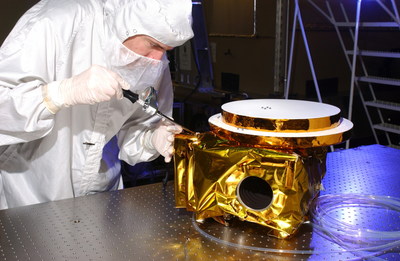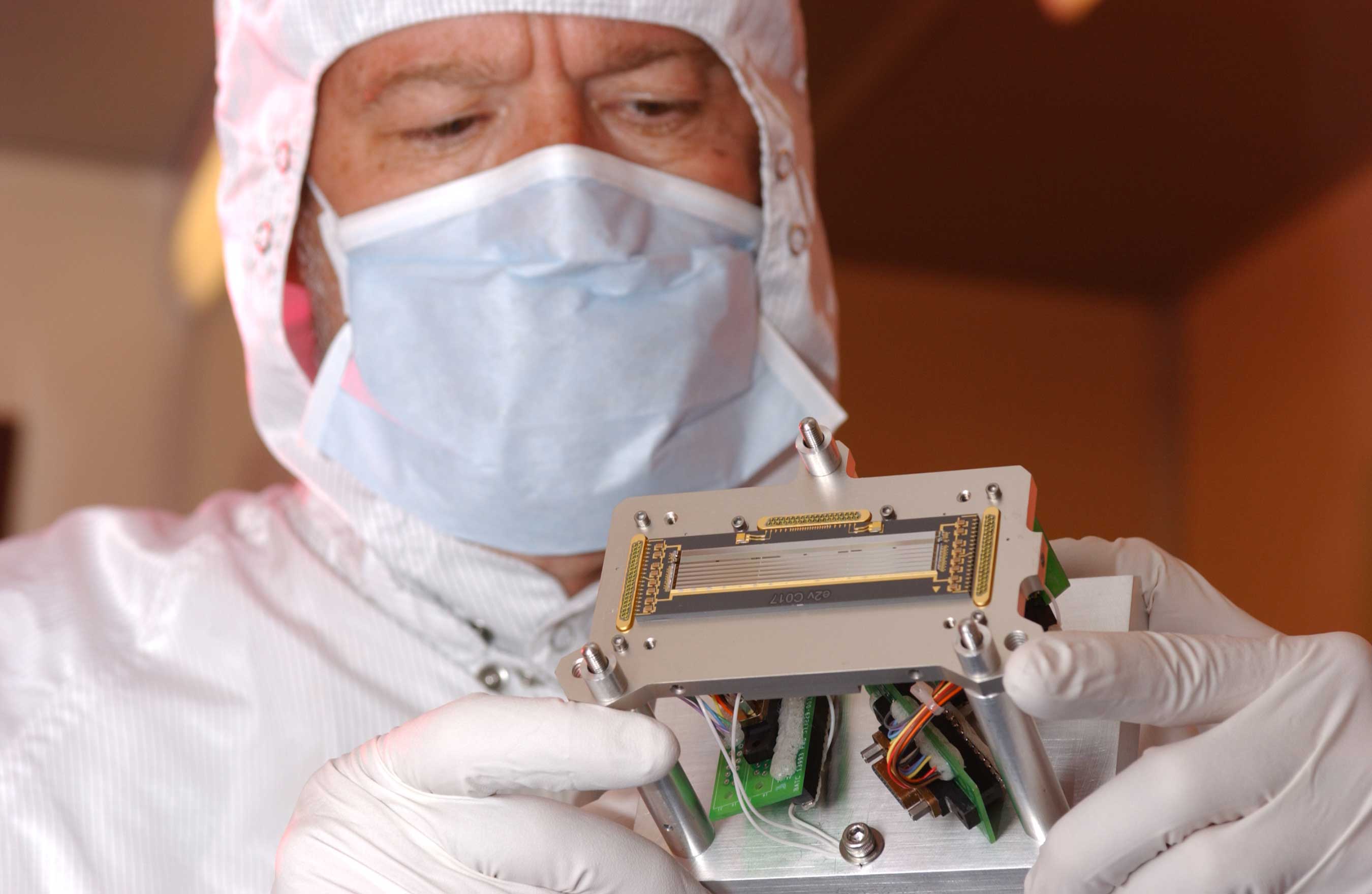BOULDER, Colo., July 1, 2015 — (PRNewswire) — ÂÂÂÂÂÂÂ The Ball Aerospace & Technologies Corp. Ralph camera aboard the New Horizons mission will provide the closest images we have ever seen of Pluto when the spacecraft arrives at the dwarf planet on July 14.
Experience the interactive Multimedia News Release here: http://www.multivu.com/players/English/7530151-ball-aerospace-new-horizons-mission-pluto/
Ralph, the main "eyes" of New Horizon is designed to help scientists map the surface geology of Pluto and its moons, and investigate Kuiper Belt objects. The small but powerful Ralph weighs only 23 pounds and operates on approximately seven watts, the power of a standard night light. The entire telescope operates around 220 K (-60 degrees F) in the cold darkness of the outer solar system. After a journey of more than nine years, Ralph will capture the first ever close-up snapshots of Pluto when New Horizons passes within 7,000 miles of the tiny, icy dwarf planet.
"We know so little about Pluto that we expect the mission to help answer questions we haven't even thought to ask," said Jim Oschmann, vice president and general manager for Ball's Civil Space and Technology business unit. "The powerful digital imaging capabilities built into Ball's Ralph instrument will help reveal the mysterious worlds in the third zone of our solar system for the first time."
One of seven core instruments, Ralph is not an acronym, but instead is named after TV character Ralph Kramden of the 1950s sitcom, "The Honeymooners." A visible/near multi-spectral and short wavelength infrared spectral imager, Ralph – like the TV character – is paired with Alice, an ultraviolet imaging spectrometer that will help us learn more about Pluto's atmosphere.
Launched on the New Horizons spacecraft in 2006, Ralph consists of three panchromatic (black-and-white) and four color imagers with telescopic resolution 10 times better than the human eye. Ralph will take images twice daily as New Horizons approaches, flies past and then looks back at the Pluto system. Following its main objective to observe Pluto, New Horizons will continue cruising through space at about 35,000 miles per hour, passing through the Kuiper Belt where some 70,000 objects pepper the Kuiper Belt with potential observation targets.
At the time New Horizons was launched, scientists knew about one of Pluto's moons – Charon.
But using Hubble Space Telescope images taken with cameras built by Ball Aerospace, scientists have discovered four more: Nix, Hydra, Styx and Kerberos.
The New Horizons spacecraft was built for NASA by Southwest Research Institute and Johns Hopkins Applied Physics Laboratory. The mission's principal investigator is SwRI's Alan Stern.
Ball Aerospace & Technologies Corp. supports critical missions for national agencies such as the Department of Defense, NASA, NOAA and other U.S. government and commercial entities. The company develops and manufactures spacecraft, advanced instruments and sensors, components, data exploitation systems and RF solutions for strategic, tactical and scientific applications. Ball continues to invest and innovate in affordable, high resolution imaging systems, contributing to the needs of civil, military and commercial customers.
For more information, visit http://www.ballaerospace.com/.
Ball Corporation (NYSE: BLL) supplies innovative, sustainable packaging solutions for beverage, food and household products customers, as well as aerospace and other technologies and services primarily for the U.S. government. Ball Corporation and its subsidiaries employ 14,500 people worldwide and reported 2014 sales of $8.6 billion.
For more information, visit www.ball.com, or connect with us on Facebook or Twitter.

Ball Aerospace's Ralph camera on New Horizons to capture best pics of Pluto

Ball engineer Rick Taylor examines a component of Ralph, the “eyes” of the New Horizons mission. Ralph’s suite of detectors will provide resolution 10 times better than the human eye.
To view the original version on PR Newswire, visit: http://www.prnewswire.com/news-releases/ball-aerospaces-ralph-is-ready-for-historic-pluto-flyby-300107297.html
SOURCE Ball Aerospace & Technologies Corp.
| Contact: |
| Ball Aerospace & Technologies Corp.
NASA Roz Brown, 303-939-6146 Email Contact Web: http://www.ballaerospace.com |
ÂÂÂÂÂ








